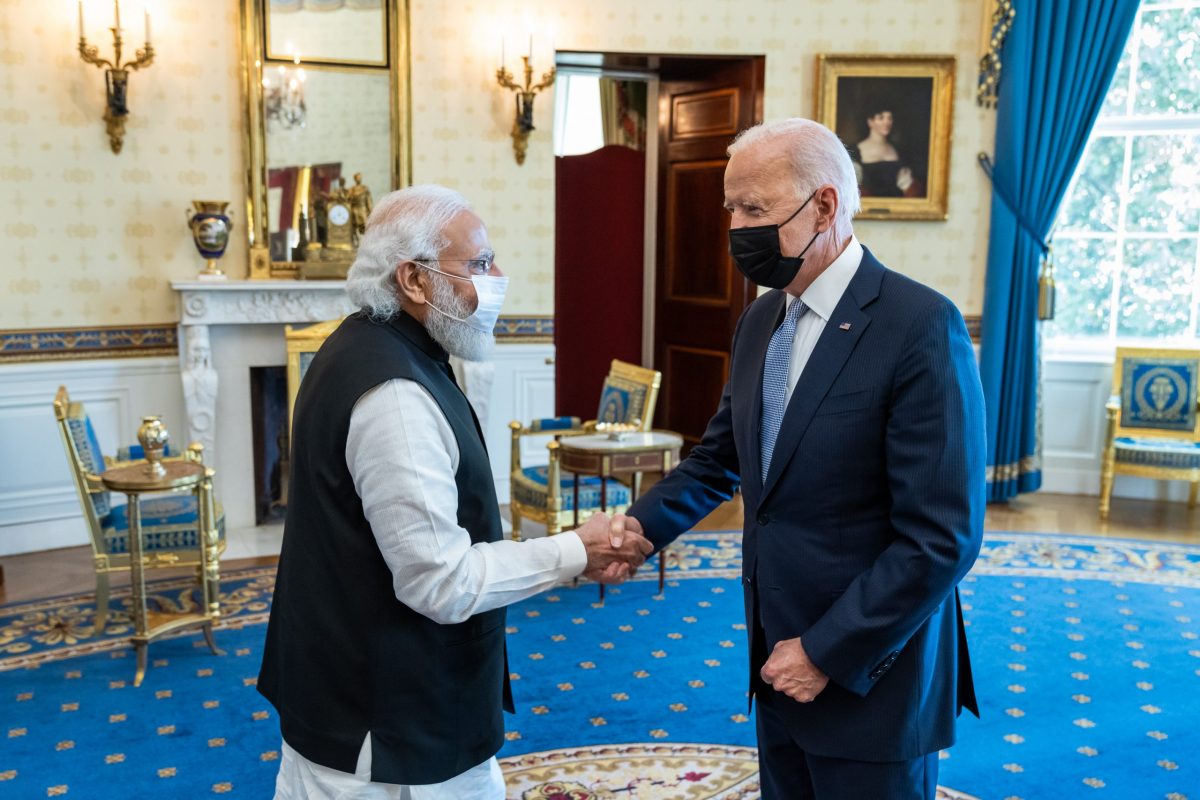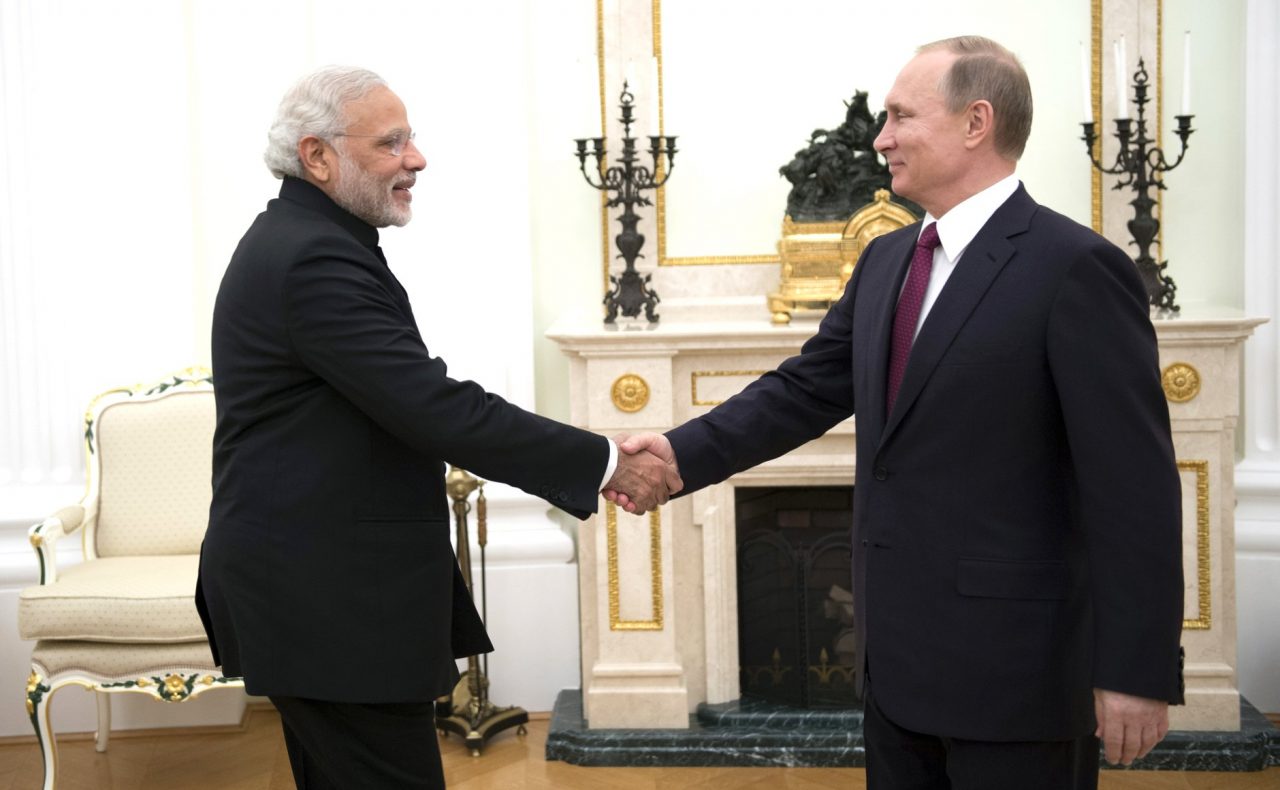Indian companies seem to have rescued the Government of India from the embarrassment of hosting both the Russian and the American/French business representatives at the country’s 12th Defence Exhibition (DefExpo22), which was formally inaugurated today (October 19) by Prime Minister Narendra Modi at Gandhinagar, the capital city of his home-province Gujarat.
It is to be noted that this defense exhibition was originally scheduled to be held from the 10th to the 14th of March at the same venue. However, in an abrupt move, the exhibition was postponed at the last minute on the grounds that the participants were ‘experiencing problems related to logistics’ in the wake of the Russian invasion of Ukraine.
However, the truth of the matter was that the government was not sure how it would handle the large presence of the Russian manufacturers at the venue, where there would also be representatives of the defense companies from the West, mainly from the United States, the UK, and France.
But this time, the situation was handled well, with clever use of the routes through the Indian companies. The Modi government said that it had limited the exhibition to the participation of Indian companies.
But then there is a catch. Foreign entities (original equipment manufacturers or OEMs) could come in a different way. That is through either their Indian subsidiaries or as partners in joint ventures with an Indian company.
This condition has ruled out the significant presence of Russia in the exhibition as it has very few joint ventures and special purpose vehicles (SPV) with Indian companies, especially in the private sector.
The notable exception, though, is BrahMos Aerospace, which was established in 1988 as an SPV between DRDO and the Russian Joint Stock company – earlier Federal State Unitary Enterprise – NPO Mashinostroyeniya, or NPOM.

Some Russian exhibitors (Rosoboronexport) have also sneaked in through Indo-Russian Rifles Private Ltd. This entity came into being in 2021, with Advanced Weapons and Equipment India Limited and Munitions India Limited (both Defence Public Sector Undertakings) partnering with Rosoboronexport and Kalashnikov (formerly Mishmash) of Russia.
They are supposed to manufacture 6.1 lakh AK- 203 assault rifles at Korwa in the Amethi district of Uttar Pradesh.
Be that as it may, the Russian presence this time pales into insignificance compared to the strength of their delegations to previous DefExpos, where they overwhelmed other foreign OEMs.
The US, French and Israeli business delegates, in contrast, are in much bigger numbers at the event, thanks to the fact that their companies have expanded their footprints in India more firmly, ensuring their presence at the exhibition.
The US companies like Boeing, Lockheed Martin, and Honeywell Aerospace are among the notables that have several joint ventures and other forms of partnerships with the Indian private and public sector companies and the Defence Research Development Organisation (DRDO).
In fact, US companies have developed long-term business interests in many Indian joint ventures.
So much so that the HTT-40, the indigenous trainer aircraft designed by Hindustan Aeronautics Limited, that Prime Minister Modi launched today at the inaugural function of the DefExpo 22, has the turboprop engine provided by Honeywell.
Incidentally, one of the principal goals of the DefExpo – 22 is to encourage the Aerospace and Defence manufacturing sector. Modi underlined that by saying, “Space technology is an example of what security will mean for any strong nation in the future.
Various challenges in this area have been reviewed and identified by the three services. We have to work fast to solve them.” “Mission Defence Space,” he continued, “will not only encourage innovation and strengthen our forces but also provide new and innovative solutions.”
The Prime Minister highlighted that space technology is shaping new definitions of India’s generous space diplomacy, giving rise to new possibilities. “Many African countries and many other small countries are benefiting from this,” he added.
The Prime Minister informed that there are more than 60 developing countries with whom India is sharing its space science. “The South Asia satellite is an effective example of this. By next year, ten ASEAN countries will also get real-time access to India’s satellite data. Even developed countries like Europe and America are using our satellite data”, he added.
Incidentally, seventy-five (75) countries are participating in DefExpo 2022, which also includes the Defence Minister hosting yesterday the second India-Africa Defence Dialogue (IADD) and the Indian Ocean Region plus (IOR+) conclave that is taking place today (October 19). More than 53 African countries have been invited for IADD and 44 for the IOR+ conclave.
“IADD and IOR+ Conclave will be two very important events for promoting peace, security, prosperity & defense cooperation throughout the region and establishing new defense and industrial partnerships,” according to India’s Defence Minister Rajnath Singh.
It seems that Africa and the Indian Ocean Region are the key targets that India has identified to export its arms products.
Modi wants India to emerge as a major arms exporter. In the defense sector, the Prime Minister said, “new India is moving ahead with the mantra of Intent, Innovation, and Implementation. Till eight years ago, India was recognized as the world’s largest defense importer.

But New India showed intent, showed willpower, and ‘Make in India’ is becoming a success story in the defense sector today. Our defense exports have grown 8 times in the last 5 years. We are exporting defense materials and equipment to more than 75 countries of the world. In 2021-22 Defence exports from India reached $1.59 billion, i.e., about 13 thousand crore rupees. And in the coming time, we have set a target to reach 5 billion dollars, i.e., 40 thousand crore rupees'” he added.
All told, as DefExpo is a trade-oriented initiative, its success ought to be measured in terms of the volume of business generated. Regrettably, all the previous editions of the Indian DefExpo have not really revealed such details.
The exhibitions before always claimed a number of bilateral government-to-government meetings and MoUs on defense undertakings and business. But rarely do they fructify in reality.
Similarly, though the primary object of a DefExpo is to showcase Indian products for exports, invariably, it ends up deciding to buy more and more foreign equipment because of its modernity and technological superiority.
Broadly speaking, India’s defense industrial policy (DIP) has so far been marked by three principal features. First, India intends to maximize its indigenous production through its own efforts – quality personnel/scientists/technologists, and production centers.
Second, if indigenously not feasible, then the country will go for licensed production of what could be obtained abroad. This obviously involves the transfer of technology from foreign vendors so that, over the years, the country gains the required knowledge and expertise to develop arms on its own. Third, if the situation warrants, then the country will for direct purchases. But it has so happened that the third feature has over-dominated the DIP as a whole.
The most fundamental flaw in India’s DIP is that the country has not spent enough on research and development (R&D). It is very easy to criticize the DRDO, but the fact remains that the DRDO’s share in India’s defense budgets is not much to talk about if one compares the sums that the major arms exporters invest in R&D.
India’s brightest students do not go for R&D. There is a tremendous shortage of qualified engineers and scientists in India’s defense sector. And this explains why the second feature of the DIP is equally poor.
It is, of course, true that this year twenty-five percent of India’s Defence R&D budget has been set aside for industry, start-ups, and academia so that the private sector should also come on par with DRDO and defense PSUs.
A Special Purpose Vehicle Model has also been proposed in the budget. This will establish the role of the private industry as a partner beyond just a vendor or supplier. All this may not be enough, but at least it is noteworthy that a path has been paved.
- Author and veteran journalist Prakash Nanda has been commenting on politics, foreign policy on strategic affairs for nearly three decades. A former National Fellow of the Indian Council for Historical Research and recipient of the Seoul Peace Prize Scholarship, he is also a Distinguished Fellow at the Institute of Peace and Conflict Studies.
- CONTACT: prakash.nanda@hotmail.com
- Follow EurAsian Times on Google News




